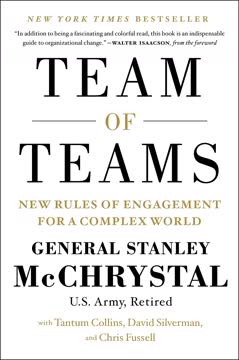Key Takeaways
1. Innovation starts with connections and insights, not just creativity
Insight is neither mysterious nor murky; rather, it is the essence of what Red Thread Thinking is all about: making connections.
Insight fuels innovation. Innovation springs from insights produced by making unexpected connections between ideas, technologies, and observations. The best insights embrace both consumer needs and commercial viability. To generate insights:
- Look beyond your industry for inspiration and analogies
- Combine existing ideas and technologies in new ways
- Observe consumers to uncover unmet needs and cultural factors
- Question assumptions and reframe problems
- Allow time for incubation and "aha" moments
Creativity alone is not enough - innovations must be commercially viable and fill a real market need to succeed. The innovation process requires both divergent and convergent thinking to generate and refine ideas.
2. Research past ideas and technologies to fuel new innovations
Your last failure may be part of your next success. The fastest, most profitable innovation opportunities could be right in front of you, yet unnoticed.
Mine existing resources. Innovators should thoroughly research past ideas, technologies, and "failed" projects in their field and adjacent industries. This can uncover:
- Underleveraged assets that can be repurposed
- Technologies that can be transferred to new applications
- Discontinued products that may now be viable
- Insights from past successes and failures
Examples:
- Post-it Notes invented from "failed" weak glue
- World Wide Web repurposed from academic networking tool
- Viagra discovered as side effect of heart medication
Don't reinvent the wheel - build on existing knowledge. Combining old ideas in new ways is often more fruitful than trying to create something entirely new from scratch.
3. Observe consumer behavior to uncover cultural insights
The best innovative insights often come from watching, without any preconceived notions or expectations, the way people navigate their world.
Ethnographic research reveals insights. Carefully observing how consumers actually use products in their natural environments can uncover:
- Unmet needs and pain points
- Creative ways people adapt or "hack" existing products
- Cultural factors and symbolic meanings attached to products
- Rituals and habits that could be enhanced or disrupted
Key techniques:
- In-home observations and interviews
- "Day in the life" shadowing
- Cultural probes and self-documentation
- Analysis of online communities and social media
Look for patterns in behavior, but pay special attention to outliers and unexpected uses. The goal is to uncover the "why" behind behaviors, not just the "what."
4. Simplicity and engagement are key to successful product design
The single biggest driver of stickiness, by far, was 'decision simplicity'—the ease with which consumers can gather trustworthy information about a product and confidently and efficiently weigh their purchase options.
Simple designs succeed. Products that are intuitive and easy to use are more likely to be adopted and recommended. Keys to simplicity:
- Focus on core functionality
- Eliminate unnecessary features
- Make interfaces clean and intuitive
- Reduce steps required to complete tasks
Engagement is also critical. Products should:
- Provide clear value and benefits
- Be enjoyable and rewarding to use
- Connect with users emotionally
- Enable social connection when appropriate
Examples of simple yet engaging products:
- Google search
- Apple iPod
- Dropbox file sharing
- Instagram photo sharing
Prototype and test designs with real users to refine simplicity and engagement. Be willing to cut features that add complexity without sufficient value.
5. Package your product to communicate its unique value proposition
Design (of both the product and its wrapping) is not about being artistic; it's about creating something that communicates its value in a unified, aesthetically pleasing, captivating, and easy-to-understand way.
Packaging is powerful communication. Effective packaging should:
- Instantly communicate the product's key benefits
- Differentiate from competitors
- Reflect the brand's personality and values
- Be visually appealing and attention-grabbing
- Function well (easy to open, store, etc.)
Consider all consumer touchpoints:
- Outer packaging
- Product design
- Unboxing experience
- Instructions and support materials
- Digital interfaces
Use color, shape, materials, and imagery strategically. Test packaging concepts with target consumers. Iconic packaging examples:
- Coca-Cola contour bottle
- Apple product boxes
- Method soap bottles
- Pringles can
6. Use iconography to convey information quickly and universally
Symbols offer innovators many advantages over text when they are trying to speak to an international market—something that is important for those of you who hope to see your products sold globally without having to redesign the entire package each time the item enters a new market.
Icons communicate universally. Well-designed icons and symbols can:
- Convey information quickly and intuitively
- Overcome language barriers
- Be understood across cultures
- Save space on packaging and interfaces
- Create a memorable visual identity
Keys to effective iconography:
- Keep designs simple and clear
- Use universal symbols when possible
- Be consistent across applications
- Test comprehension with diverse users
- Consider cultural differences in interpretation
Examples of effective iconography:
- Airport wayfinding symbols
- Computer interface icons
- Olympic sport pictograms
- Traffic signs
Combine icons with minimal text when needed. Develop a cohesive visual language for your brand.
7. Passion and perseverance drive innovation through obstacles
Steve Jobs said, "About half of what separates the successful entrepreneurs from the non-successful ones is pure perseverance."
Innovators need grit. The path from idea to successful innovation is rarely smooth. Key qualities for persevering:
- Passion for solving the problem
- Willingness to pivot and adapt
- Resilience in the face of setbacks
- Openness to feedback and criticism
- Ability to maintain optimism
Strategies for persevering:
- Break big goals into small, achievable steps
- Celebrate small wins along the way
- Learn from failures and setbacks
- Surround yourself with supportive people
- Take breaks to recharge when needed
Many successful innovations faced repeated failures and pivots before breakthrough. Stay focused on the problem you're solving, not a specific solution. Be willing to change course based on feedback and new insights.
8. Sustainable innovation creates both profit and social good
We need to reassert and expand our understanding of business's relationship to social and environmental responsibility.
Innovate for impact. The most successful and enduring innovations often create both economic and social value. Consider:
- Environmental sustainability
- Social impact and community benefit
- Ethical supply chains and labor practices
- Long-term effects on society and culture
Examples of impactful innovations:
- Microfinance
- Fair trade certification
- Renewable energy technologies
- Educational technology
Building social good into a business model can:
- Attract conscious consumers
- Inspire employee engagement
- Create positive brand associations
- Open new market opportunities
- Build long-term resilience
Innovators are well-positioned to create new business models that profitably address social and environmental challenges. Think beyond short-term profit to create lasting value for all stakeholders.
Last updated:
Review Summary
Red Thread Thinking receives mixed reviews, with an average rating of 3.75 out of 5. Many readers find it insightful and practical for fostering innovation, praising its real-world examples and creative approaches. Some appreciate its synthesis of various concepts and its applicability beyond business. However, others feel it lacks depth or novelty, particularly for those already familiar with innovation literature. Critics note redundancy with other self-improvement books and question its methodology. Overall, readers value its collection of innovative stories and techniques, though opinions vary on its effectiveness and originality.
Similar Books








Download PDF
Download EPUB
.epub digital book format is ideal for reading ebooks on phones, tablets, and e-readers.




